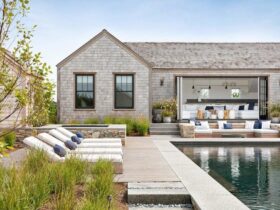Creating a building that is both pleasing to the eye and practical to use is a challenge many architects face. It’s not enough for a structure to look good; it must also serve its purpose well. The finest buildings balance beauty and function, becoming landmarks that people admire and enjoy using.
Harmony with the surroundings
A visually appealing and functional building exists in isolation. This means considering the local landscape, climate, and architectural style of nearby structures. When a building harmonizes with its location, it feels more natural and comfortable to be in.
Thoughtful use of materials
The materials used in a building play a big role in both its appearance and function. Architects choose materials not just for how they look but also for their durability, energy efficiency, and maintenance needs. A beautiful building often showcases its materials’ natural qualities.
Balance of form and function
A key principle in creating aesthetically pleasing, functional buildings is finding the right balance between form (how it looks) and function (how it works). Every part of a building should serve a purpose, but that doesn’t mean it can’t also be visually appealing. The challenge is to make the necessary elements beautiful as well as functional.
Efficient use of space
A well-designed building makes the most of its available space. This doesn’t just mean cramming in as much as possible. It’s about creating spaces that flow well and feel comfortable to be in. Efficient space use can make a building more functional as well as visually appealing. Even small spaces can feel generous and beautiful when well-designed.
Natural light and ventilation
Buildings that make effective use of natural light and airflow are more beautiful and functional. Large windows, skylights, and open layouts can bring sunlight deep into a building. This looks good and reduces artificial lighting, saving energy. When a building breathes well, it’s more comfortable and healthier for its occupants.
Attention to detail
Beautiful, functional buildings often stand out because of their attention to detail. This means carefully considering every aspect of the design, from the overall structure down to the smallest fixtures. Well-chosen details can enhance both the space’s look and usability. Lighting fixtures that complement the architecture while providing the right amount of light show thoughtful design.
Flexibility and adaptability
Buildings that adapt to changing needs over time are both more functional and appealing. The value of flexible spaces is increasing as needs change. This adaptability can also contribute to building visual interest. Movable walls, modular furniture systems, or multipurpose rooms are examples of flexible design.
Technology integration
Modern buildings often incorporate technology to enhance both their appearance and functionality. Smart building systems control lighting, temperature, and security more efficiently. Energy-saving features like automatic shades can complement building aesthetics. When technology is well integrated, a building becomes more functional while adding visual appeal.
For those interested in learning more about architectural design principles, many resources are available. You can click here to explore further ideas and see examples of buildings that successfully combine beauty and functionality. By understanding these key principles, we can better appreciate the thought and skill that goes into creating the buildings that shape our cities and our lives.






